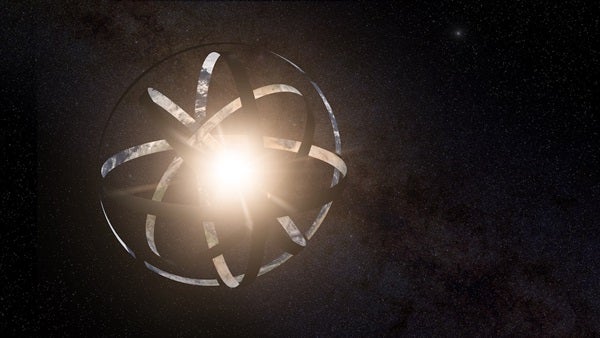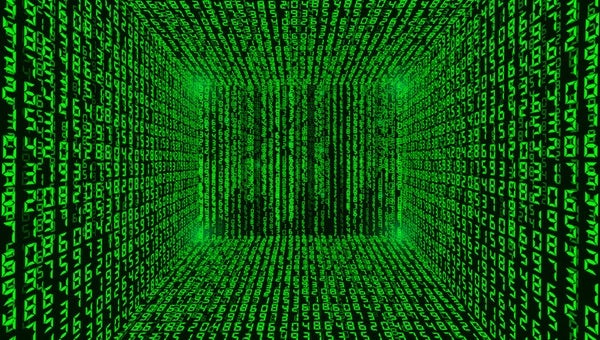Key Takeaways:
- Advanced civilizations might be artificial intelligence (AI) that exist as machines instead of flesh and blood.
- Even if AI life exists, it could be difficult to detect. They might not be sending out radio signals (what SETI listens for) or their messages might be too complex for us to understand.
- We should look beyond radio waves for signs of ET. We might find evidence in the form of advanced structures or unusual chemicals in planetary atmospheres.
- The universe might hold civilizations that are far more intelligent than us. They could have unimaginable abilities and motivations.
- Our current understanding might be limited. There could be things out there that we can’t even conceive of, including the possibility that we ourselves live in a simulation.
Is there intelligent life somewhere in the cosmos? People have been debating this issue for centuries, if not millennia. However, with programs like SETI (Search for Extraterrestrial Intelligence) employing radio telescopes to actively listen for radio messages from alien civilizations, we’ve only recently had a real chance of finding out.
Should these searches be successful, what should we anticipate finding? I made this assumption during a talk at a conference for the SETI project Breakthrough Listen: it is highly unlikely to be little green men.
Assume that life originated on other planets and that it progressed in a manner similar to Darwinian evolution (this need not be the case). Even so, it’s quite unlikely that technology and intelligence would advance at precisely the same rate as they do on Earth. If it floated considerably, then that planet would undoubtedly show our radio telescopes no signs of extraterrestrial life. However, life might have had a billion years or more of head start around a star older than the Sun.
The history of human technological civilization only extends millennia (at most), and it might only take another century or two for inorganic intelligence, like artificial intelligence (AI), to surpass or surpass humans, who are composed of organic materials like carbon. Artificial intelligence (AI) may be able to use a lot more data in the future than it does now because computer processing power is already growing exponentially. That implies, it could then become exponentially more intelligent, potentially surpassing the general intelligence of humans.
Maybe we could start by using technology and genetic engineering to improve ourselves, resulting in cyborgs that have some inorganic and some organic components. There may be a shift here toward completely artificial intelligence.
For billions of years, AI might even be able to evolve, producing increasingly superior rounds of itself at a rate that surpasses that of Darwinian evolution. Then, organic intelligence at the level of humans would only exist as a brief chapter in our “human history” before machines take over. Therefore, it would be highly unlikely for us to “catch” alien intelligence during the brief period of time when it was still embodied in biological form if it had evolved similarly. If we were to detect extraterrestrial life, it would be far more likely to be electronic than flesh and blood – and it may not even reside on planets.
That means we must revise the Drake equation, which was developed in 1960 to determine how many extragalactic civilizations we might be able to communicate with. The equation makes a number of assumptions, including the number of planets and the length of time—roughly 1,000–100 million years—that a civilization can send signals into space.
However, an organic civilization’s lifespan might only be a few millennia at most, whereas its electronic diaspora might last for billions of years. This suggests that there might be more civilizations than previously believed, but that most of them would be artificial when taken into the equation.
We ought to reconsider the term “alien civilizations.” A society of individuals is implied by the term “civilization.” On the other hand, aliens could consist of a single, unified intelligence.
Decoding messages
It would therefore be unlikely that decodable messages would be recorded if SETI were to succeed. Rather, it might identify a byproduct—or even a malfunction—of some extremely complex machine that operates beyond our comprehension.
The radio portion of the electromagnetic spectrum is the focus of SETI. Nonetheless, it is obvious that we should investigate all wavebands, including the optical and X-ray regions, since we have no idea what is out there. We ought to keep an eye out for any additional indications of non-natural phenomena or activity in addition to listening for radio transmissions. Dyson spheres, which are man-made structures built around stars to absorb their energy, and chlorofluorocarbons, which are nontoxic, nonflammable compounds made of carbon, chlorine, and fluorine and found in planet atmospheres, are two examples of these. These substances may be an indication of industrial pollution or “terraforming,” the process of altering a planet to make it more habitable. These chemicals are greenhouse gases that cannot be produced by natural processes.

It would be worthwhile, in my opinion, to search our solar system for evidence of extraterrestrial life. There are other possibilities, even though we can probably rule out visits from human-like species. For example, intelligence may have been transferred to tiny machines by an extraterrestrial civilization that mastered nanotechnology. It could then invade other worlds, or even asteroid belts, with swarms of microscopic probes.
And even if we did receive a decodable radio message, how could we know what the intention of the super-intelligent sender would be? We have no idea at all; just consider the wide range of strange (religious, financial, and ideological) motivations that have historically inspired human endeavors. They might be curious and calm. Less obviously, they might discover that it’s simpler to think when it’s colder, so they might decide to hibernate for billions of years or simply move far from any stars. However, they might be expansionist, which is what most people who have considered the course of civilizations in the future seem to expect.
Intelligence’s future
Unfathomably intelligent species may emerge as the universe develops. Take our own future, please. Star births and deaths in our galaxy will eventually happen more slowly, until the Milky Way’s collision with the Andromeda galaxy causes a shockwave that will last for roughly a billion years. After then, the debris from Andromeda, our galaxy, and their smaller companions within our local group of galaxies will clump together into one amorphous galaxy, while the distant ones will eventually move away from us and vanish.
However, our remnant will last much longer—possibly long enough for a civilization to arise that could possess enormous amounts of energy and even be able to use a galaxy’s entire mass.
This could be the highest point of the long-term trend toward increased complexity in living systems. At this point, every atom that was formerly found in gas and stars has the potential to merge into a massive, galactic organism. Some science fiction writers imagine black holes and wormholes—bridges connecting various points in spacetime that, in theory, could provide space travelers shortcuts—being created via stellar-scale engineering. Though these ideas are well beyond our current technological capabilities, they do not defy fundamental physical laws.
Are we artificial?

It’s possible that post-human intelligences will be able to create extremely powerful computers. The climate is one of the many complex phenomena that humans have already managed to model. However, more advanced civilizations might be able to mimic entire worlds or universes, or even living things with real consciousnesses.
How can we be certain that we don’t inhabit a simulation like this one made by advanced extraterrestrials? Is it possible that we are merely a source of enjoyment for the all-powerful entity operating this model? In fact, there might be more virtual universes than actual ones out there if life is destined to be able to develop advanced civilizations capable of creating computer programs. This could mean that we are in one of them.
Though this theory may seem unlikely, it is entirely grounded in what we currently know about cosmology and physics. Nonetheless, we should undoubtedly have an open mind regarding the likelihood that there is a lot we don’t know. Is it possible that the constants and laws we observe are only “local” and that they are different in other regions of the universe? That would open up even more amazing options.
Ultimately, physical reality could encompass complexities that neither our intellect nor our senses can grasp. It’s possible that some electronic “brains” merely see the world very differently. Neither can we foresee or comprehend their intentions. Because of this, we are unable to determine whether the radio silence that SETI is currently experiencing indicates that advanced alien civilizations are not present, or if it is just their preference.
[


